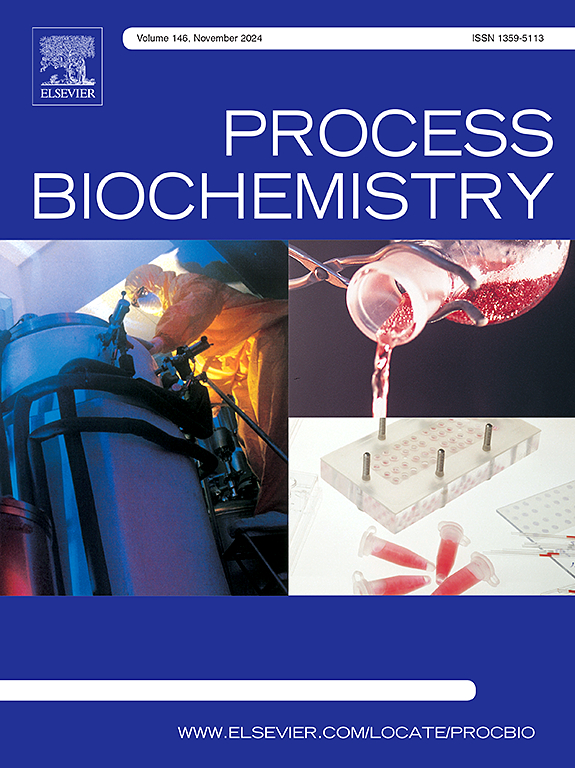利用生物传感器检测各种疾病的生物标记物的最新进展:综述
IF 3.7
3区 生物学
Q2 BIOCHEMISTRY & MOLECULAR BIOLOGY
引用次数: 0
摘要
本综述文章讨论了可用于多种疾病生物标志物检测的各种传感器,旨在帮助和鼓励研究人员设计有效和早期检测疾病的设备。一般来说,这些传感器可根据检测系统或传感器的生物识别能力分为不同类型。然而,根据光学传感器,这些传感器又可进一步分为显色型、发光型、化学发光型和光纤型。在本文中,我们尝试使用不同的聚合物系统分析各种分析物或各种疾病的生物标记物,并将其归类为光学显色传感器。样品溶液中生物标记物的光学检测是通过引起光学特性变化的生化反应实现的。通过配体与分析物相互作用产生的颜色变化,可以轻松地分析结果,测量结果有助于诊断各种疾病。肾脏生物标记物种类繁多,可用于指示肾脏功能,如葡萄糖(GL)、尿酸(UA)、尿素、肌酐(CRN)和白蛋白(AL)。葡萄糖(GL)也是糖尿病的重要生物标志物。对于尿路感染(UTI),亚硝酸盐是尿样中的重要生物标志物。胆红素是肝损伤的生物标志物。汗液样本中氯化物浓度的增加可作为囊性纤维化疾病的生物标志物。体内胆固醇水平升高可作为心脏骤停的生物标志物。乳酸盐似乎是败血症的有力预测指标。这篇综述主要涉及用于检测各种疾病生物标志物的生化反应。文章简要讨论了这些反应的化学方面,以便对其进行比色评估,从而确定生物标记物。本文还讨论了可用于开发护理点检测(POCT)试纸条的各种聚合物支持物。本文章由计算机程序翻译,如有差异,请以英文原文为准。
Recent advances in biomarkers detection of various diseases by biosensors derived from optical chromogenic polymeric transducers: A review
The present review article discusses the various sensors for biomarker detection available for multiple diseases with the scope of helping and encouraging researchers to design devices for the effective and early detection of diseases. In general, these sensors are classified into various types based on bio-recognition by detection systems or transducers. However, based on optical transducers, these are further divided into chromogenic, luminogenic, chemiluminescence, and optical fiber. Here in this article, attempts have been made for the analysis of various analytes or biomarkers of various diseases using different polymeric systems under the classification of optical chromogenic transducers. Optical detection of biomarkers in the sample solution is obtained via a biochemical reaction that causes changes in optical properties. Herein, results can be easily analyzed by a color change produced via ligand-analyte interaction, which can be measured to help in the diagnosis of various diseases. There are various types of renal biomarkers, which can be used as an indication of the functioning of the kidney like glucose (GL), uric acid (UA), urea, creatinine (CRN), and albumin (AL). GL is also an important biomarker for diabetes mellitus. For urinary tract infections (UTIs), nitrite is an important biomarker in urine samples. Bilirubin is used as a biomarker for liver damage. Increased chloride concentration in the sweat samples can be used as a biomarker for the disease cystic fibrosis. An elevated cholesterol level inside the body acts as a biomarker for cardiac arrest. Lactate appears to be a powerful predictor of sepsis. This review mainly deals with biochemical reactions for the detection of various biomarkers of diseases. Chemical aspects of the reactions are briefly discussed for their colorimetric evaluation to determine the biomarkers. This article also discusses various polymeric supports available for developing point-of-care testing (POCT) strips.
求助全文
通过发布文献求助,成功后即可免费获取论文全文。
去求助
来源期刊

Process Biochemistry
生物-工程:化工
CiteScore
8.30
自引率
4.50%
发文量
374
审稿时长
53 days
期刊介绍:
Process Biochemistry is an application-orientated research journal devoted to reporting advances with originality and novelty, in the science and technology of the processes involving bioactive molecules and living organisms. These processes concern the production of useful metabolites or materials, or the removal of toxic compounds using tools and methods of current biology and engineering. Its main areas of interest include novel bioprocesses and enabling technologies (such as nanobiotechnology, tissue engineering, directed evolution, metabolic engineering, systems biology, and synthetic biology) applicable in food (nutraceutical), healthcare (medical, pharmaceutical, cosmetic), energy (biofuels), environmental, and biorefinery industries and their underlying biological and engineering principles.
 求助内容:
求助内容: 应助结果提醒方式:
应助结果提醒方式:


